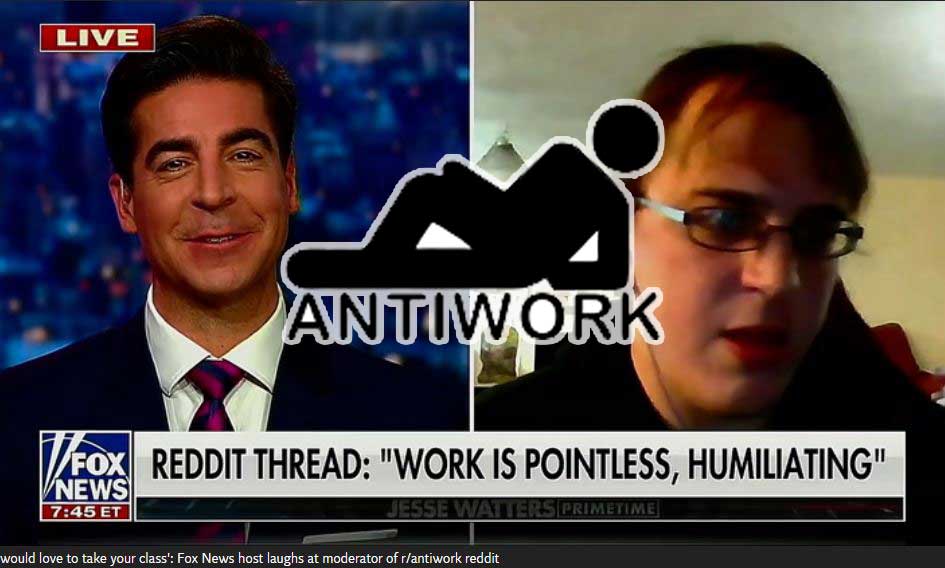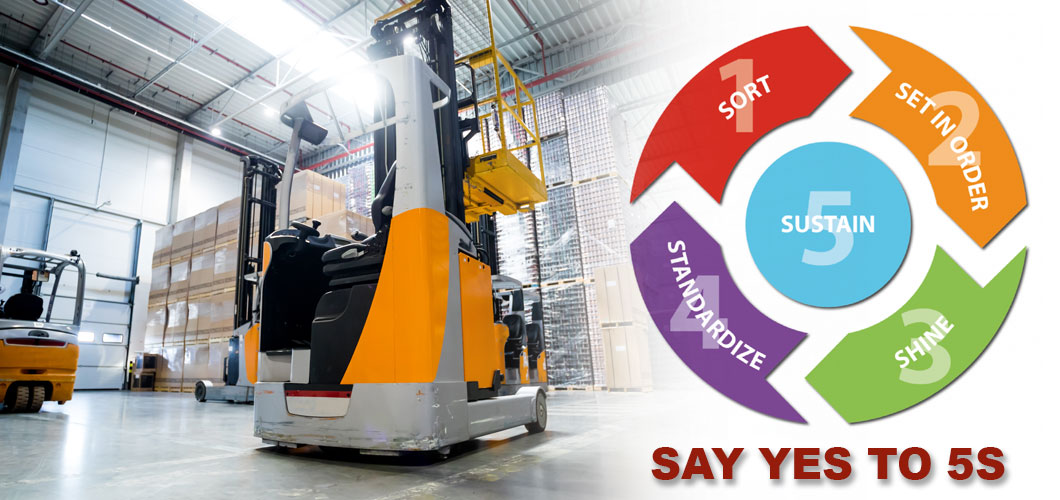Candidates are wary of big promises and over-hyped perks they’re sold during the interview process. They want to know, when the rubber meets the road, what their day-to-day experience will be like as your employee.
Continue readingFeeling The Burn(out)
Your efforts to be fully staffed are being fought on two fronts. The first is trying to fill your open positions. The second is keeping the employees you’ve already hired. With nearly everyone short-staffed, chances are your existing staff is working harder and longer to get the job done. Overworked workers are picking up a lot of the slack and they are suffering from burnout.
According to the World Health Organization, burnout is a syndrome resulting from workplace stress that has not been successfully managed. Companies without systems to support the well-being of their employees have higher turnover, lower productivity, and higher healthcare costs, according to the American Psychological Association (APA). Another study by the APA claims that burned-out employees are 2.6 times as likely to be actively seeking a different job, 63% more likely to take a sick day, and 23% more likely to visit the emergency room. These numbers show burnout is a terrible enemy to your success at work.
A thousand workers were surveyed by Ipsos in early April of 2022 and the studies amplify what many managers already know: this pace of burnout is not sustainable. These charts show what is causing burnout, and what employees think would help alleviate the problem.
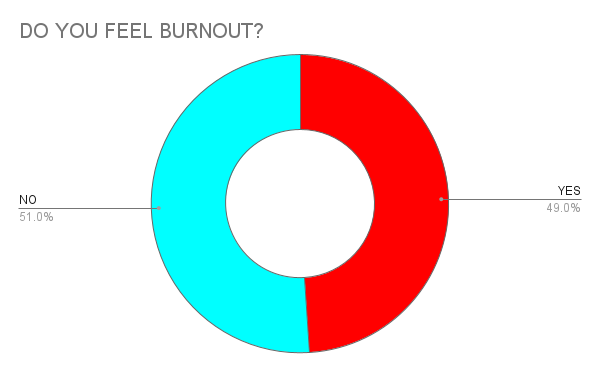
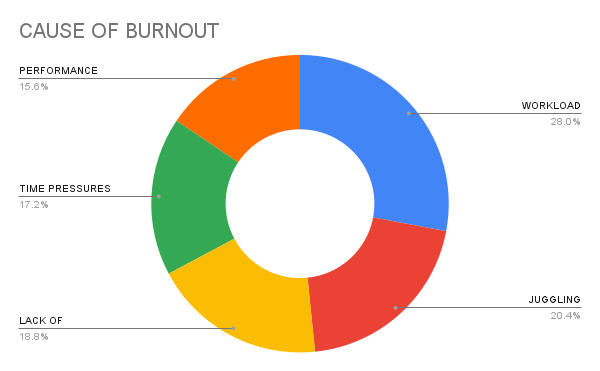

Burnout is being felt most by women with 52% reporting feeling burnt out.. Demographically, the highest number of those suffering from burnout remains among young workers where 53% of those aged 18-34 have started to feel the effects of burnout. These employees are prone to leave their jobs in the next 12 months, a 33% increase from August of 2021.
You get it. Everyone’s exhausted from the last couple of years. Their basic needs aren’t being met and they’re losing balance between work and everyday life. So what can you do? The Ipsos survey asked their respondents “what would help ease your burnout?”
About 70% of those surveyed said that a four-day workweek would help. Flexibility and working from home are also highly sought-after job benefits. Some businesses may be able to offer those to their employees, but many of those benefits would require a logistics reshuffling of epic proportions by most companies. Short of some of these lofty goals, there are a few things you can do right now to try and minimize burnout with your staff.
Extra breaks – Even giving an employee a couple of extra fifteen-minute breaks through the course of a week can go a long way. It shows that you are an empathic employer by giving employees a few extra mental health breaks throughout the week.
Ask the right questions – Start with smaller departments and ask, ‘If I could wave a magic wand and make your jobs easier, what would that look like?” This should help you figure out priorities of what needs to be done first to improve your staff’s workload. Employees shouldn’t be expected to have all the solutions, but they can tell you what is not working, and that can be invaluable. Don’t make assumptions. Have in-person conversations.

Solving Little Problems – Tiny little things that go wrong at work wear people down. One day, there’s coffee in the break room or the vending machine is full and the next day it is not. Burnout happens when presupposed features in our day-to-day work lives are missing or taken away. Maybe the company has spent money on something the employees didn’t ask for or even use. Employees could view such an action as impractical, a waste of money, and a poor reflection of the organization. Satisfaction and dissatisfaction are not on a continuum with one increasing as the other diminishes but are instead independent of each other. It’s important to look at each independently and work to keep the little things running smoothly.
Empathy – If an employee is missing quotas, deadlines aren’t being met, seems to be in a bad mood, or starts coming in late–it all may be signs of burnout. Keep in mind that people can have burnout in their private lives as well. That can carry over into work. Don’t assume that there isn’t burnout just because things aren’t busy at work and don’t take it personally that the work environment is leading to burnout.
Access to Resources – Burnout can cause a lot of health problems, both physical and mental. It’s important to make sure your team is connected to resources. Hopefully, you have wellness programs in place that can help your staff work out burnout issues. You should have a list of external sources that can provide support in mental and physical health. Encourage employees that are feeling burnout to utilize these services.

Take Care of Yourself – If you’re a manager feeling burnout yourself, it can be contagious. Setting a positive example of how to manage burnout can help your team understand how to deal with their own struggles. It’s ok for you to be vulnerable too. Managers are not superhuman. It’s ok to let the team know you feel the same issues as they do. Take a mental health day and let your team know it. Here’s some advice on how to deal with burnout as a manager.
The best way to stop burnout is to get in front of it. Implementing some of these action items and tips along with focusing on keeping workloads balanced can minimize the effects of burnout and create a stronger bond with your staff and improve your company culture.
Five Ways to Speed Up Your Hiring Process
Ten days. That’s how fast you, as an employer, have to hire for a position if you want to catch the top talent in your industry. Of course, there is a fine line between making the process streamlined and efficient, and rushing through only to make a bad hire.
Most companies’ hiring process takes 27 days on the low end and up to 90 days on the high end. This is set up through the traditional process of advertising a position, reviewing candidates who fit the description, and then the interview process begins. It’s usually an initial phone interview, followed by one or two in-person interviews, a review internally of final candidates, making an offer, the candidate making a counteroffer, and finally—hiring your ‘perfect’ candidate. Imagine going through all of that only to lose the candidate in their first year, or even worse, find no one to fill the position at all.

Google has begun pivoting towards a faster hiring process. They realized that after working so hard to optimize the hiring process, they had too many steps in the interview process, and therefore brought the number down to four steps. This includes multiple on-site interviews of a candidate in a single day by different teams back-to-back. Hubspot makes every new hire suggest a way to improve the hiring process.
Speeding up your interview process will help draw in the best candidates, ease your staff’s burden of carrying the load, and increase your operation’s overall productivity. Here is our countdown of the top five ways you can speed up the process in your business.
5. Pay attention to red flags. You can reduce the numbers of resumes you’re searching through and candidates who might not fit your work culture by following your instincts when it comes to the ‘red flags’. The basic things like showing up late to the interview, dressing inappropriately, talking too much, offering vague or non-responsive answers, coming off as arrogant, combative, or defensive are all signs that your candidate may not be a great fit.
Conversely, it’s good to ignore some outdated flags, like gaps in work history due to COVID or other life circumstances. Right now is also a time to cut candidates some slack about their tenure at previous positions as so many people have moved around in the last couple of years during The Great Resignation. You might be the opportunity they have been looking for! This is especially true in manufacturing where wage increases have been a huge motivating factor for employees to switch jobs, sometimes more than once.
Another traditional red flag that we now disregard at WSI is the presence of THC in our drug screening process for applicants. Most of our clients in Michigan, where recreational marijuana is legal, have continued to find success in hiring great associates by eliminating THC from the drug screen. However, we will screen for it up request from our clients. And remember, in states like Indiana, where we also operate, marijuana is illegal.
4. Make a plan before there is an opening. One of the sayings we have here at WSI is “Nobody plans to fail.” If you take the time to come up with a comprehensive workforce hiring strategy early, it could drastically cut down on how long your hiring cycle is. Some best practice recommendations include assigning dedicated resources on your HR team to forecast future talent needs and to have a strategy for how you will attract ideal candidates for the open positions. Having excellent screening questions in the applicant tracking system can ease the workload for your hiring manager as well as eliminating candidates who are not a fit.
Just because a candidate doesn’t get the job doesn’t mean you should disregard them. Those candidates are key for creating a talent pipeline for your business. Build a database and continue to market to them to strengthen your brand identity. Staying on their radar means they could be likely candidates again in the future and a pool of talent you can turn to immediately.
Once you’ve made a hire, take a moment with your team to evaluate your plan of action and see what you can do to simplify the hiring process.
3. Strengthen your brand identity. Some of the most successful factories and warehouses can fill positions very quickly based on their name and reputation alone. They may not have the highest wages, but their work culture, benefits, and opportunities to grow continually draw a great field of applicants. Reputation matters. Just because someone doesn’t apply for or get hired for a position the first time, doesn’t mean they won’t next time if you continue to show them why you’re an exceptional place to work.
When you decide who you want to hire, make sure to follow up and let those unsuccessful candidates know. This information provides closure on a role and allows them to return to their job search. Staying in contact with interviewed candidates is so rarely done that, even when you are delivering “bad news”, you are still presenting your company in the best light.
For the employees that get the job, the entire experience from A-Z (hiring to onboarding and onward) needs to be seamless so that employees are excited about working for your company right off the bat. They’re more likely to spread the word about how great it is to work for you.

2. Utilize your current staff. Who better to fill a role than someone you know who has the soft skills and has shown the ability to learn and grow with your business? When creating your job descriptions, write a version specifically targeting your current employees, encouraging them to grow within the organization. Be sure your team understands that the search net is being cast far and wide for the best candidates, but they should always apply for positions that they think would be a great fit for them.
Look to your current staff members as your best source of referrals. Most people tend to hang out with people who are a lot like them. So if you’re comfortable with the demeanor of an employee, chances are you can find similarly motivated and competent associates just by asking around the warehouse or office. It can also be a great way to motivate the staff to ease their own workload by getting someone hired faster.
Former employees can be a great source to fill jobs as well. Rather than looking only at brand-new candidates, your pool of previous workers may already have the experience and qualifications for the roles you need to fill.
Another way to utilize your current staff is to create a development program. Continually cross-train your staff and offer chances to learn about opportunities outside of their daily responsibilities.
1. Hire a staffing agency. It is not self-serving to say that hiring a staffing agency can be the fastest way to fill your openings. If you’re an HR manager or hiring executive and haven’t used a staffing agency because you might be concerned with costs, you should realize that any costs are more than offset by the increase in quality candidates and a reduced timeline for hiring.
WSI has a pool of qualified candidates and is constantly looking for the best in class talent. We work closely with our clients to understand specifics of a role and we accurately portray that to qualified candidates. We do this by sending candidates from our pre-existing talent pool, handling background and drug screens, and utilizing the latest HR software technology to get more qualified applicants.
If you’re ready to speed up your hiring process, contact us by clicking here.

Don’t miss out on the best possible employees for your operation. Be prepared, have a plan, utilize your current employees, and continue to strengthen your brand identity to all applicants for your positions. The best candidates are looking…but not for very long.
Is The Great Resignation Over?
Projections for the 2022 unemployment rate are holding steady and experts predict we will be back at pre-pandemic employment levels by midsummer. Better than expected job growth is showing signs the labor market is doing well so far in March. So we’re asking, is “The Great Resignation” over?
You’ve heard that phrase, “The Great Resignation” nonstop for the last year. Anthony Klotz, an organizational psychologist and professor at Texas A&M University, coined the phrase during an interview with Bloomberg last May to describe the wave of people quitting their jobs due to the ongoing coronavirus pandemic, which led many to re-think where, how and why we work. The movement itself was a repudiation of the status quo.

Americans quit jobs at a record pace during the second half of 2021. About 23% of employees will seek new jobs in 2022, while 9% have already secured a new position, according to a December ResumeBuilder.com poll of 1,250 American workers. Market losses, supply chain issues, high fuel prices, inflation, heartbreaking world affairs, and yes, still Covid-19, mean business growth is stymied for a bit and hiring may slow down sooner than later.
Turnover may be slowing down due to another factor: you. Companies have answered the call to compete for workers by raising wages, improving benefits, and creating a better work culture. Anthony Klotz says this will keep employee turnover from being “completely rampant” in the months ahead.
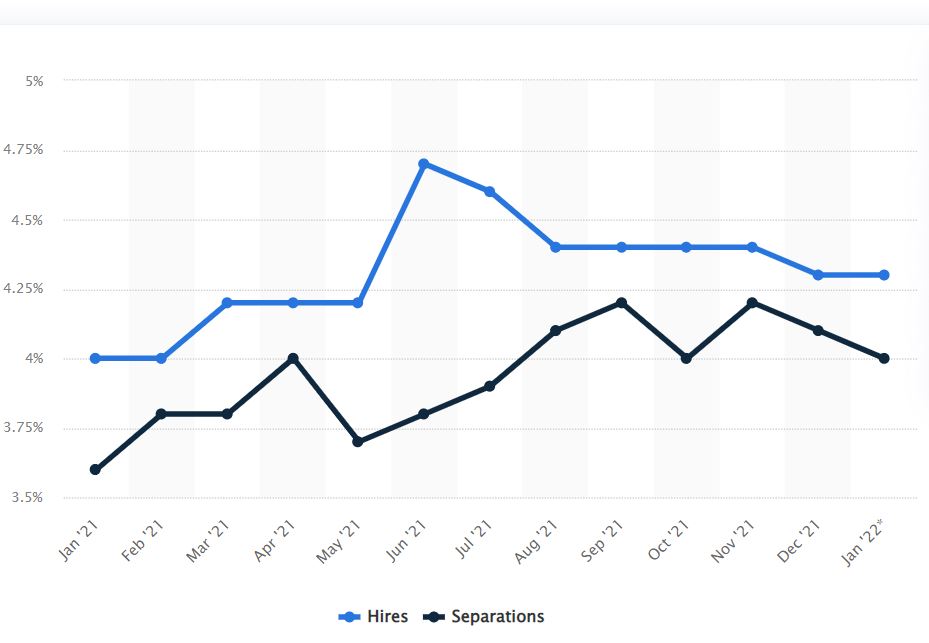
This chart tells an easy story. Hiring was off the charts last spring, and in the months that followed, separations grew to an all-time high. But separations have leveled off, especially in correlation to hires, in consecutive months as we headed into 2022.
A survey by The Muse points to a statistic that a large majority of those who resigned, are regretting their decision. The survey asked about 2500 workers, who identify as Millenial or Gen-Z, and found that roughly seven in ten workers found their new roles were different from what they expected when they interviewed for their current position.
About one in five job seekers even admitted they would quit within a month if it’s not as expected, and 41% say they would give it between two and six months. Just under half of job seekers — 48% — would actually try to get their old job back, according to the data. Older generations might have stuck with a job a couple of years to avoid seeming unstable, but now 80% of Gen-Z said it’s acceptable to leave a new job before six months if it doesn’t live up to your expectations. The Muse CEO, Kathryn Minshew calls this quick turnaround in a job Shift-Shock.
The above chart breaks down quit rates by age.The gold and blue lines represent Gen-Z. Green is Millenial and Gen-X. The yellow line represents Baby-Boomers. Is it over? Was it hype? No and no. The worst may be behind us, but if 80% of Gen-Z say it’s ok to dump out of a job from the get-go, we might be seeing another surge of The Great Resignation later this year.
Now is the time to keep your employees energized and engaged in your operation. Minshew advises, “Companies need to be more upfront about the reality of their jobs because it could help retain workers who aren’t totally satisfied but could be over time. People are much more likely to accept the good and the bad and to show up as engaged and productive if they have entered the situation with their eyes wide open,” she said.
Some simple ways to keep your new employees engaged:
- Social Functions
- Stay Interviews
- Work Perks
- Flexibility over their own schedule
- Improve any toxic-related areas of work culture
- Evaluate managers who will be dealing with new employees directly
The Society of Human Resource Management suggests employees who experience shift shock are less likely to be engaged or to become high performers. So, ask new employees on a regular basis how they are doing in their new position. Ask, “What’s your favorite and least favorite thing about working here?” Let them be transparent and open. Ask them to keep a work diary if you feel it could give the hiring team some insight as to what the job is versus how it was described to the employee.

As we return to a version of normal, try to have in-person interviews. It allows potential employees to walk into the building and see what they’re getting into so they get a feel of the energy and culture of your operation. Also, during interviews, don’t let your HR Managers talk only about the upsides of a job. The more transparent you are, the more new employees will be able to deal with adversity and have their expectations managed.
Do not show any resentment for paying higher salaries. Inflation is hard on everyone, and it may seem like you’re paying more for less than you used to get. Employees can see when an employer doesn’t think they’re earning their paycheck. If that happens, they’re likely out the door sooner than later. Give new employees time to acclimate and grow into their roles.
The numbers show The Great Resignation was real and is winding down. Now is an opportunity to soften the landing for those who participated and prevent a second wave of shift-shock that could happen later in the year.
Why You Should Make Every Day Employee Appreciation Day
Employee Appreciation Day was the brainchild of Bob Nelson, one of Recognition Professionals International’s founding board members. Nelson collaborated with his publishing company, Workman Publishing, to make the holiday appear prominently on workplace calendars starting in 1995. This occasion gives employers and HR Managers a great opportunity to salute and recognize valuable contributions to the team.
Whenever the conversation comes up about Employee Appreciation Day, which is the first Friday of March, someone always says, “Everyday should be Employee Appreciation Day!” It’s a great sentiment, but that’s not an appreciation day, that’s a culture change in your workplace.
With the need to attract and retain talent to meet growing demand, a personal attachment to your employees is critical to culture change. If you’re planning to create a special moment for your employees this year, take this time to condition yourself and your business that you don’t need just one day to do it. Appreciating your employees every day year round is the first step to creating a workplace culture that people want to be a part of.
Some simple ideas that can go along way:
Saying Thank You
The first step in moving beyond just one appreciation day for your staff includes the need to embed recognition into your company culture. Adding recognition for your employee efforts takes the least amount of effort and goes a very long way. Tell someone different everyday how you appreciate their efforts for the company. Not everyone likes to be appreciated the same way. Be sure to ask the person how they like to be recognized. If you want to reward your employees with something other than recognition, we had some non monetary ideas last year during the holidays that employees love.
Make Fridays Special
Friday. It’s the best day of the workweek. Tap into the energy and positivity of your workforce by enhancing their already well-earned mood.
- Giving employees a few extra minutes of a break.
- Having donuts or other food catered for a shift once a quarter.
- Staff Football Pick Em Contests (seasonal)
- Other special employee perks (but not Hawaiian Shirt Day)
Video Message
Take a few minutes a week to record a video from leadership. These messages are universally well-received and have high engagement rates. It is also a useful communication tool with a personal touch.
Educate Them
A 2021 study conducted by Deloitte and the Manufacturing Institute (MI) predicts that 2.1 million manufacturing positions will go unfulfilled by 2030. These empty positions could cost the U.S. a loss of about $1 trillion in GDP.
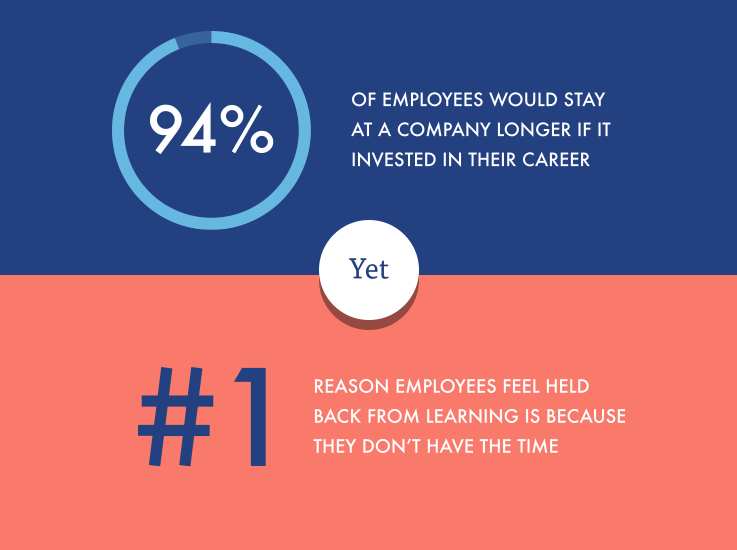
Source: LinkedIn Learning
Millennials will make up three-quarters of the workforce by 2025. Fifty-six percent of managers say they would take a career enhancement course if it were recommended by their employer. The problem is time. Employees want to learn, they just don’t have the time. The good news is over 90% of companies offer online learning. Millennials look at a job as an opportunity to grown and learn. Take hold of that passion and use it to fill the oncoming skills gap headed to manufacturing. Educate them on the job.

Inclusivity
Employees bring their best each day when they can be their authentic selves while on the job. This means creating a culture of acceptance among your employees, and giving special attention to employees who step up to support efforts to include everyone. Eliminate harassment and bullying if it exists in your workplace. Inclusivity and diversity are among the most sought after qualities in a position amongst millennials and Gen-Z.
If this is the first time you’re hearing of Employee Appreciation Day, now is a good time to learn about how you can celebrate your employees and their contributions to your operation. If your culture needs improvement, take this special day to start a new habit of recognizing great work and celebrating those who give so much to your operation. Then, keep the effort going year round. And next year, the first Friday of March won’t take you by surprise.
Making Day One The ‘Best Day Ever’
Temporary associates sound off on their job placements and how they are treated differently.
The American Staffing Association says that there are more than 3 million temporary and contract workers working for staffing companies in America during an average week and 17 million during a typical year.
Both sides of the employer-employee relationship can feel trepidation about one another. Both sides go in hoping they are a good fit for one another. The early days of an associates assignment are crucial in reducing your turnover, and engaging them to strive to be hired-in for full time employment.
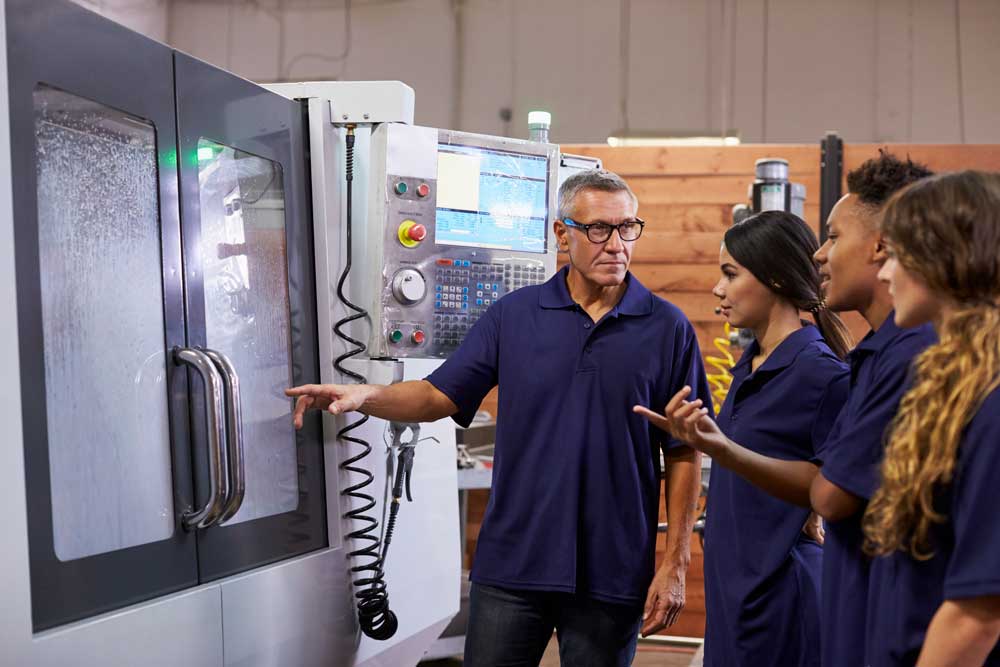
Pulling back the curtain here at WSI, some of the common complaints we receive from our associates is that they were treated poorly by supervisors, didn’t feel like they received adequate training, didn’t have a voice in the operations and issues that arose during their shift, or felt like they are treated differently because they are on a temporary assignment.
I’ve learned that people will forget what you said, people will forget what you did, but people will never forget how you made them feel.
Maya Angelou
How does this negatively impact your business?
Many associate workers have long felt that they’re treated as second-class citizens in some workplaces. Your business has a responsibility to everyone who comes to work for you each day, whether they are full-time employees or temporary workers. Morale and employee relations problems can arise when you have temps working alongside permanent employees for months, doing the same work and putting in the same hours, but not receiving the same benefits afforded their permanent employee coworkers. Your regular employees might look down on those working as temporary associates as “outsiders,” or simply not talk to them or mix with them at lunch or office functions.
If an associate worker on assignment has negative feelings about their workplace early in their assignment, what are the chances they see the assignment through? How much desire will they have to become a full-time employee in your operation? What are the long-term effects to your culture and reputation when new employees have a negative experience working for you?
Get Into Their Heads-In a Good Way!
The psychological aspect of managing employees is habitually lost on large scale employers. Making an associate feel like part of the team improves their output. Acknowledgement of their issues, ideas, and concerns helps validate them as an employee and makes them feel pride in being a part of your operation.

Easy ways to do this include remembering their name right off the bat, asking top-level questions about the employee (where they grew up, family at home, etc) and what they like. How can you prepare them for a terrific first day? Who’s going to show them around and who are you asking to have lunch with them to make them feel welcome from the start? An associate who feels seen and that their new employer is making a small effort to treat them like the ‘family company’ everyone always boasts about in their job descriptions will make you stand out from this being ‘just another job.’
Keep Them Safe

Studies show that the frequency and severity rates of on-the-job injuries are significantly higher with temporary workers. Never assume an associate is fully prepared to work unsupervised until you have taken the time to see that they can safely perform their work tasks. It’s not just the dangers of the job. Many employees are going to be eager to prove themselves and could open themselves up to injury or harm moving too fast or without caution. With potential legal liability, it is best practice to ensure that all workers undergo a basic orientation safety training as well as issues such as discrimination and harassment.
Show Them the Way

Most of WSI’s clients love to hire hard-working, dependable associates as full-time employees usually well before the minimum hours-worked threshold is even met for the assignment. Supervisors and team leaders can be on the front lines not only to train workers on temporary assignment, but to also motivate and coach them to get to the finish line and become full-time employees.
If a temporary associate can see the way forward, feels that they’re already part of your team, and their concerns and ideas are validated by their supervisors, why would they not give your company their loyalty and best effort? Coach your staff to treat temp workers as equals, and you’ll likely see your requests for temporary assignment workers drop sharply over the long run because you’ve hired them all to your team.
Best Tips for Business Donations to Charity
Your business can create a simple act of kindness that benefits the community and helps your brand build goodwill. Corporate philanthropy is the act of a corporation or business promoting the welfare of others, generally through charitable donations of funds or time. Donating to nonprofits helps the charity of course, but the impacts of giving to charity and how it helps your community and your business are invaluable.
Sadly, contributions by U.S. companies fell 6.1% in 2020 to $16.66 Billion (a decline of 7.3% when adjusted for inflation) during the pandemic, while individual donations increased. This is largely blamed on the economics of the pandemic in 2020, as personal savings rates skyrocketed, while corporate profits were down 5.1% in 2020.
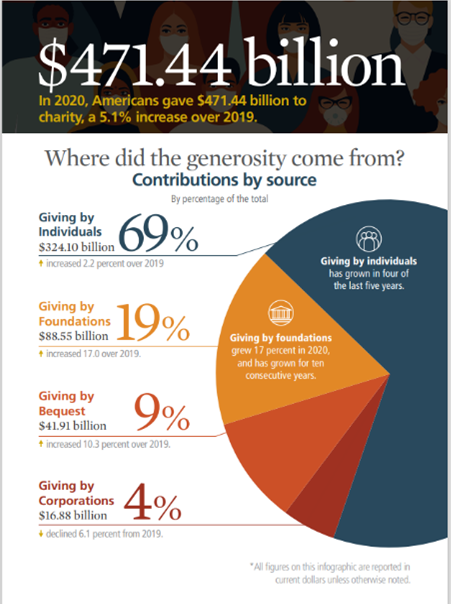
On average, corporations donate less than 1% of their profits to charity. American Express and The Chronicle of Philanthropy recently conducted a study that found small companies donate an average of 6% of their profits each year. American households donated 2-3% of their income to charities over the same period. Many would like to see corporations increase their donations to match what the typical American gives each year.

WHY DOES MY BUSINESS NEED TO STEP UP?
A study from the Chronicle of Philanthropy says declining levels of trust among Americans for most institutions and each other may also contribute to the move away from charitable giving. Most of the distrust lies along the same division lines in American society today. That mistrust is especially pronounced among Gen-Z and millennials, which could cause another layer of challenges for charitable organizations. An example of this would be Saint Jude’s Children’s Research Hospital, which raised $2 billion in 2020, making it the third most contributed charity in the United States. Yet, only half of what St. Jude raised over the last five years went to research or patient care. Thirty percent went to cover fundraising costs. Allocations like these cast doubt in donors’ minds about the true impact of their gift.
How much money Americans make also plays into the reduction in charitable donations. Four out of five households with an income of $200,000 or more contributed to a nonprofit. On the opposite end of the spectrum, less than three in five households with an income of $50,000 made a charitable donation in 2020.
In addition to helping fill in the gaps for your local nonprofits, there are other benefits for your business including building goodwill in your local community, improving the morale and company culture of your organization, promoting charities that match your values as a company, and building up your network.

WHERE DO I START WITH CHARITABLE GIVING?
Volunteer: Instead of a monetary donation, companies can donate their time to a great cause. Volunteer as a company at a soup kitchen, charity run or homeless shelter. With volunteer support initiatives, companies partner their employees with nonprofits to provide specialized support only that company can provide.
Sponsor a sports team: Youth organizations are always looking for businesses to sponsor their teams. Donate funds towards field upkeep and uniforms. Companies that sponsor teams can have their names displayed on uniforms or field signs.
Launch a charity drive: Start a collection for a particular cause. Your company can collect non-perishable food items for distribution at food banks. Toy drives are popular around the holidays.
Technical Assistance: Do you operate with professionals who could donate their skills and time to help non profit organizations get a leg up on technology, web and IT services, or graphic design. You can’t claim this as a deduction, but it’s an invaluable donation to many groups.
Donate online: Set up automatic donations through virtual giving platforms. Donors that set up some sort of recurring monthly donation give 42% more than one-time givers, claims Nonprofit Source. You could even leave out a collection jar at your place of business and cash in the collected amount to send through an online portal.
Create A Giving Culture: Collective participation in philanthropy engages employees with each other. Companies with engaged employees who enjoy their jobs outperform companies with disengaged workers by up to 202%! You can match employee contributions to their favorite charities. Employee grant stipends are also a way to not only encourage giving, but to create an added benefit to employees and their well being. An example is The Coca-Cola Company, which offers a $20,000 employee matching opportunity, and Walmart, who provides $250 to employees for 25 volunteer hours.

WHAT CAN I DEDUCT?
Studies show that donating to nonprofit organizations just to get a tax break are few and far between. Business deductions for charitable contributions may be limited, and the deductions may only be deductible for the individual owners rather than the business itself. Every business type, with the exception of traditional C corporations, pays taxes as a “pass-through” entity. This means the business’s taxes are passed along to the company’s individual owners.
The IRS website reads, “In general, contributions to charitable organizations may be deducted up to 50% of adjusted gross income computed without regard to net operating loss carrybacks.” New laws now permit C corporations to apply an increased corporate limit of 25% of taxable income for charitable cash contributions made to eligible charities during calendar year 2021. The increased limit is not automatic. C corporations must choose the increased corporate limit on a contribution-by-contribution basis.
It’s important to start by verifying whether you can claim a deduction for a donation to a charity. In order to claim as a deduction, only donations to 501(c)(3) organizations qualify, and a donation to an individual person or any other 501(c) designated non-profit is typically not tax-deductible.

If donating to a new charity this year, be sure to ask to see the business’s letter from the IRS that designates them as a tax-exempt organization. You can also search using the IRS Exempt Organizations Select Check online tool to verify whether the charity is or is not eligible for a deduction.
Don’t make it so that you’re donating to receive a benefit of any type (e.g.. donations to a raffle don’t qualify because you could win a prize in return). As mentioned above, you can’t create a donation based on time and services provided and your meal and entertainment expenses don’t qualify.
You can only deduct mileage if you were not traveling to the destination for any other reason. You cannot deduct your time or the time of your employees who are volunteering for a charitable organization. Gifts and/or donations to political parties, organizations, candidates, or particular individuals, are not recognized as tax-deductible by the IRS.
Do not take this as professional tax advice. It’s not a bad idea to speak with financial experts for advice on how to donate to charity in a way that makes sense for your business.
What is Antiwork? (and why you need to embrace it)
Tune out the noise and depravity and try to reach those who are making it.
If The Great Resignation gave you heartburn, antiwork may cause a coronary. It doesn’t have a positive ring to it for a reason. Antiwork is a “movement” that has gained momentum in the last several years as a community on the social media platform Reddit. It now boasts 1.7 million followers in its community and was the fastest growing community on Reddit in January 2022.

In short, r/antiwork seems to be against just about everything including getting out of bed in the morning, especially when it comes to having a job. The forum says that work is pointless and humiliating. If you’re an employer, this is a mind-numbing journey down the rabbit hole of madness. But don’t lose sight of the forest in the trees.
Gen-Z and Millennials are consistently blamed for the labor shortage. r/antiwork is also taking its fair share of blame. The community isn’t defined by any political ideology that may exist on Reddit. The founders “simply” argue for a utopian employment system that deprioritizes output and/or production. “Unemployment for all, not just the rich!” That’s the catchphrase of r/antiwork. Sounds fair.
On January 25th, Fox News interviewed the moderator or “mod” of the community, Doreen Ford. It did not go well. It went so poorly, in fact, that the community retreated to a private sub-reddit, and Ford was terminated as moderator of the forum. This may be the smoking gun that proves the community was fan-fiction and under blistering cross-examination, not a serious movement that has any lasting impact.
But, where do the misguided go now?
If you’re unfamiliar with Reddit, it is a network of communities each with their own front pages. Reddit is sometimes referred to as “The Front Page of the Internet” and is the tenth most popular social network. It’s demographics skew young and male. 36% percent of adults 18-29, and 22% of adults 30-49 use Reddit regularly. Just under half have a college degree. Almost all have a high school diploma. They’re venting anonymously against all the forces of life pushing in on them: student debt, housing, wages, inflation. They’re not all lazy, and not against having a job, even if the loudest comments say otherwise. They just want to feel some positive momentum. They’ve seen the rich get richer, while they themselves have not.

You’ve increased wages, reduced overtime, offered more flexibility, and improved your workplace culture since the pandemic took hold. What more can you do? Weirdly, why not embrace r/antiwork…or at least the platform choice of the youth who have recently guided toward their beliefs before they went underground. (again)
Manufacturers should create pathways to tomorrow’s jobs today. Left unabated, the manufacturing skills gap — which is now anticipated to leave 2.1 million jobs unfilled by 2030 — could cost the U.S. economy as much as $1 trillion.
Utilizing Reddit is an opportunity to present yourself to a still impressionable demographic to show them what makes you unique. Find creative ways to show those pathways to success for those who are looking for a way forward after years of frustration treading water personally and professionally. Changing their minds about what it means to work and who you are as an employer may be the only way to save the future. You can start your own Reddit profile. Join communities also known as “subs”. Create an ad campaign (called Promoted Content). Beware though, unlike Facebook or Instagram, non-promoted branded material that feels like a generic advertisement could get downvoted or marked as spam. Here is a great guide to how to develop content on the Reddit platform without pandering to those on the platform. Users will always respect honesty.
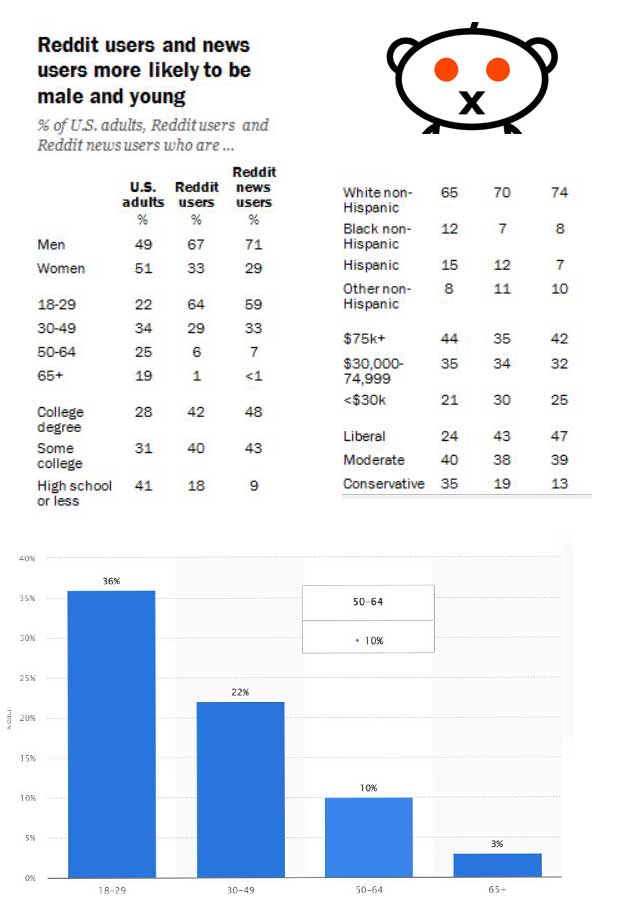
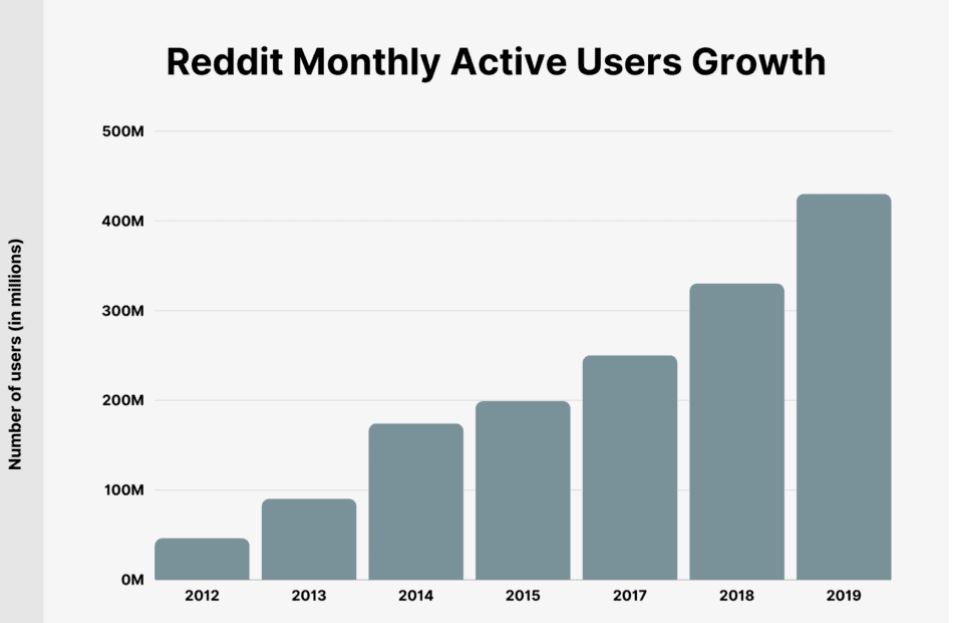
Create memorable content to post and advertise to grab their attention. Take time to listen to what they want. Both the antiwork crowd and Employers are going to have to give a little to solve this massive problem of unfilled jobs coming over the next eight years. Manufacturing can help with their incentives and flexibility, and workers can help with willingness to kickstart their output. As a business, the best ways to show this very deliberate demographic that you have a great culture worthy of their time is to celebrate your diversity, your commitments to the community, your commitment to their values, and a digital evolution in your operations that only they can solve. Empowerment comes from the knowledge that we are not victims of circumstance.

The people who are going to fill these jobs are on this platform and you can’t ignore them. There’s just too many of them. Be authoritative—yet gentle, transparent, self-deprecating, unique, funny, and compassionate. Showing this young generation that your business sees them as part of their future, is going to be part of your successful growth. The time to plant the seed is now…even if it is on Reddit.
How to Help Aging Workers and Your Business
Hiring reliable older workers benefits your business more than you can imagine.
Continue readingThe Best Method to Improve Your Business
Use the manufacturing system known at 5S to improve your workplace efficiency in the new year.
Continue reading